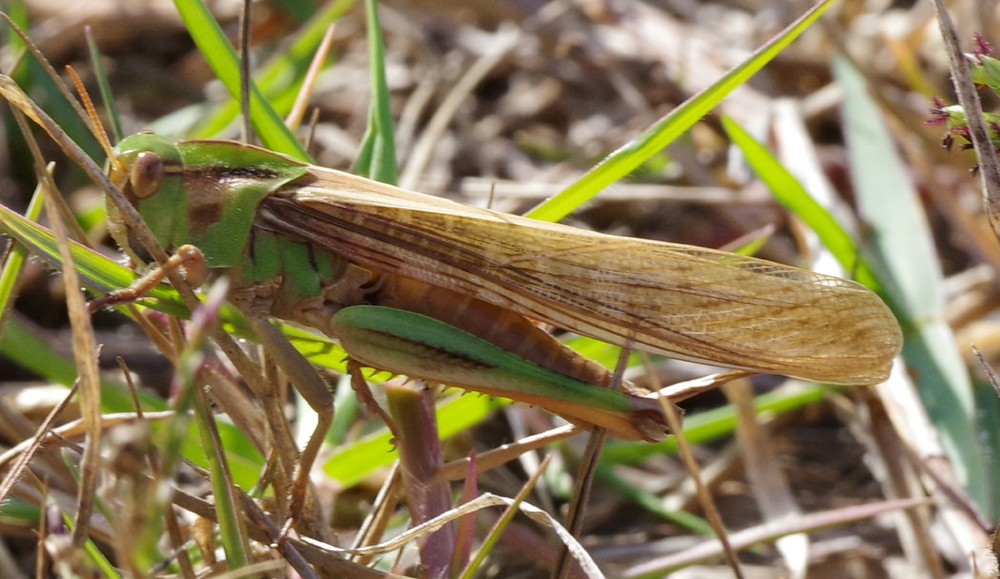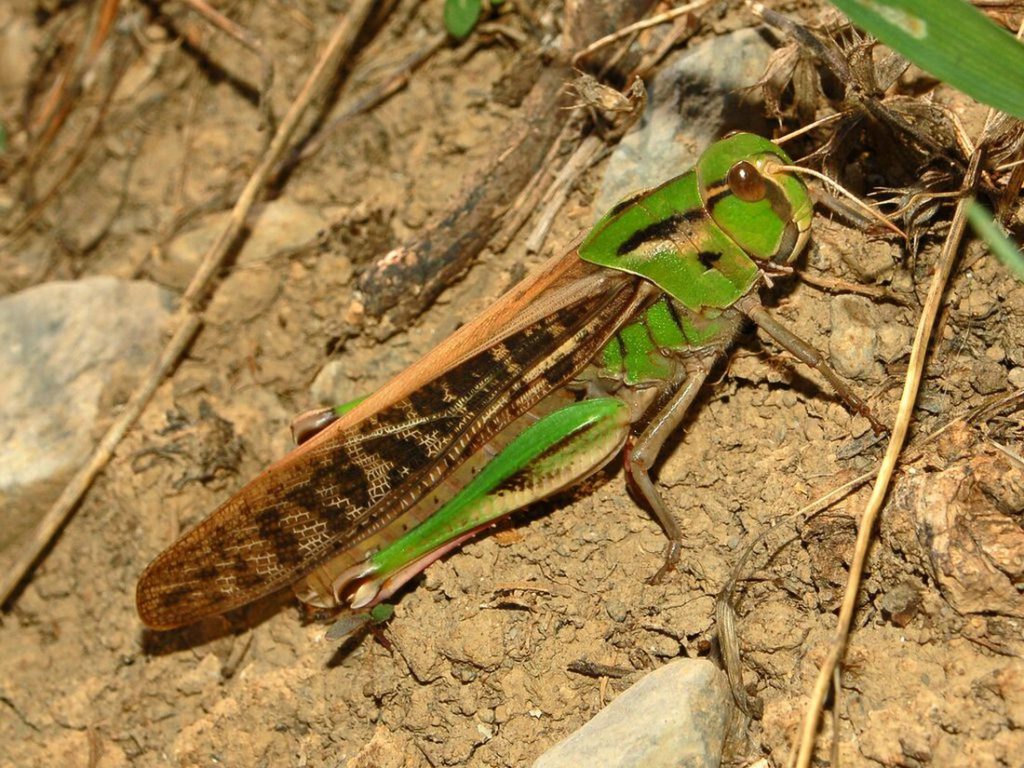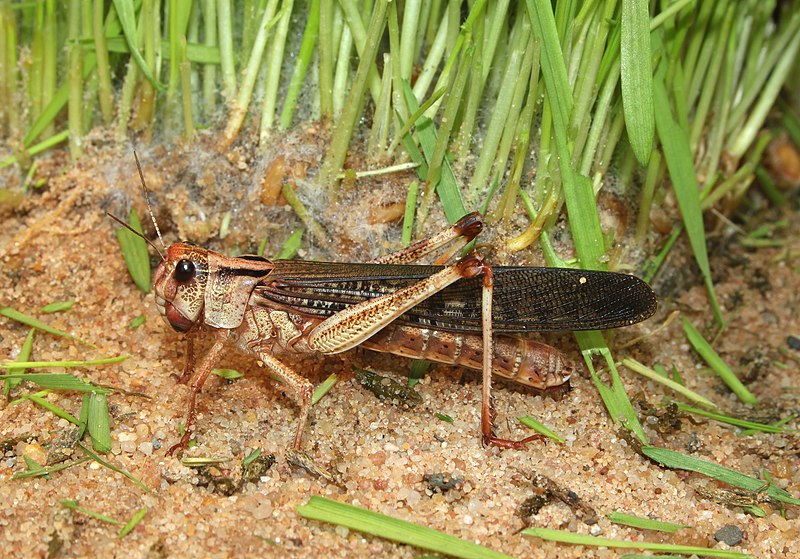Locust (Migratory locust) is one of the most dangerous and well-known pests of agriculture. It is known for its the ability to form giant flocks, which can destroy huge areas of crops in a matter of hours.
This insect is an example of a unique survival strategy, because its behavior changes depending on the number of individuals in the population. Under normal conditions, it behaves solitary lifestyle, but with increasing numbers turns into a social being, which moves in swarms numbering millions of individuals.
In this article, we will look at the structure of the locust, its life cycle, behavior, distribution, role in nature and impact on agriculture.

Scientific classification
🔬 Classification of migratory locusts:
✔ The Kingdom: Animals (Animalia)
✔ Type: Arthropods (Arthropoda)
✔ Class: Insects (Insecta)
✔ Row: Erect wings (Orthoptera)
✔ Family: True locusts (Grasshopper)
✔ Gender: Locust (Locust)
✔ View: Locust (Migratory locust)
📌 Interesting!
Locust – the only species of its kind, however, there are many subspecies adapted to different ecosystems.
Structure and appearance
💠 Main Features:
• Body length: males – 30–55 mm, females – 45–60 mm.
• Color scheme: greenish, brownish or yellowish, varies depending on the phase of development.
• Wings: well developed, transparent, with dark veins, allow for long flights.
• Hind legs: powerful, jumping, adapted to active movement.
• Oko: large, complex, provide broad overview.
📌 Interesting!
The color of a locust changes depending on its phase:
• IN single phase it is greenish or brown.
• IN swarm phase the color becomes dark with yellow spots.
Developmental phases and life cycle
The migratory locust has incomplete transformation, that is, it goes through three stages of development:
1️⃣ Egg
• It is deposited by the female in the soil to a depth of 4–6 cm.
* Masonry contains 20–120 eggs in a special capsule – a “foam cocoon”.
• Development continues from 10 to 40 days depending on the temperature.
2️⃣ Larva (nymph)
• Similar to an adult, but wingless.
• During development, it sheds 5 times.
• Duration of the phase – 30–40 days.
3️⃣ Imago (adult)
• Has well-developed wings.
* Live from 2 to 6 months.
• With sufficient food, it leads solitary lifestyle, but with overpopulation it turns into swarm phase.
📌 Interesting!
Locust larvae can form groups and move in sync, even before they become adult insects.
Swarm and solitary phases
The migratory locust is unique in that it has two different behavioral phases:
🌱 Single phase
• Lives separately, does not form flocks.
• Has a greenish color.
• Less active and less aggressive.
🌪 Swarm phase
• It begins when the population density exceeds a critical level.
• Insects become more aggressive, actively moving in groups.
• Change color to dark yellow with black markings.
• Packs can consist of tens of millions of individuals.
📌 Interesting!
Studies have shown that behavioral change is associated with serotonin release – a neurotransmitter that causes social activity.

Nutrition and the threat to agriculture
🍽 What does a locust eat?
• Leaves, stems, flowers, fruits.
• Advantage is given grain crops (wheat, barley, corn).
• In the absence of plant food, it can eat tissues of young tree shoots.
⚠ Damage to the crop
• One swarm of locusts can eat the equivalent of 35,000 people's food in a day!
• In a few hours it may destroy fields of several hectares.
* Causes famine and economic losses in countries where locust outbreaks are frequent.
📌 Interesting!
Large locust infestations in the past have led to economic crises and even population migrations.
Methods of struggle
🛠 How are locust populations controlled?
✔ Biological method – use of natural enemies (birds, parasitic wasps).
✔ Chemical method – use of insecticides to destroy eggs and larvae.
✔ Agrotechnical method – destruction of egg-laying sites by plowing the soil.
📌 Interesting!
In some countries, locusts even used in food – it is rich in proteins and trace elements.

Interesting facts about the migratory locust
🔹 The largest swarms
• The largest swarm recorded in history contained 200 billion individuals and occupied an area of 5000 km2!
🔹 Movement speed
• Locusts can fly at speeds up to 16–20 km/h and overcome up to 150 km per day.
🔹 Symbolism in culture
• In the Bible, locusts are mentioned as one of the ten plagues of Egypt.
🔹 Environmental benefit
• Locusts are an important part of the ecosystem, since its larvae serve food for many birds, reptiles and mammals.
Conclusion
Locust (Migratory locust) is one of the most dangerous insect pests, capable of destroying entire crops. It is an example of unique adaptation to the environment, having the ability change behavior depending on population size.
💡 Locust population control is an important task for farmers in many countries around the world, as even one large infestation can cause catastrophic damage!